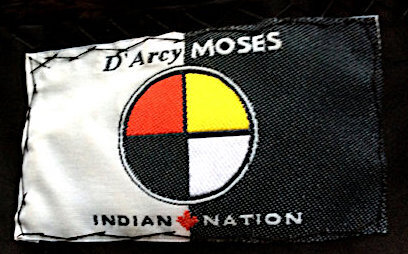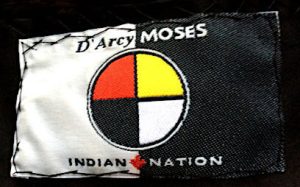Raised by his adoptive parents in Alberta, Canada, Moses D’arcy knew nothing of his South Slave Dene tribal roots until he was a teenager living in Edmonton, trying to succeed as a fashion designer. He soon landed a spot in the prestigious Toronto Fashion Incubator, a program that educates and mentors young designers, helping them develop their creative and professional skills.
His new-found interest in his aboriginal heritage greatly influenced his direction in fashion. His early collections put him on the map as an innovator with a message, as he successfully integrated fashion-forward designs with traditional First Nation motifs and indigenous environmental values.
In 1991, he was one of 10 emerging Canadian fashion designers featured at the Toronto Festival of Fashion. That same year, he went on to win the Woolmark Award and the Dubonnet Design Contest. Saks Fifth Avenue, Neiman Marcus, Holt Renfrew and other top retailers all carried his clothing line.
Working primarily in animal skins and fur, Moses’s work came under fire in the 1990s as he became a frequent target of the anti-fur lobbies in both Canada and the United States. Signing on with Canada’s Fur Council in an attempt to “make fur cool again”, only added another element of controversy to his already politically-charged career. Although he was able to make a living representing the council, his standing in the world of fashion suffered as a result of this partnership.
After taking some time off to pursue other avenues of interest, Moses came back to fashion design in 2015, relocating to Enterprise, a small enclave outside of Alberta, and concentrating on more traditional, regional indigenous styles.
A member of AKWE:KON, the Canadian Aboriginal Designer Trading Group, a retrospective collection of Moses’s evening gowns was purchased for the permanent collection of the Government of the Northwest Territories of regional aboriginal history of arts and crafts.
Written by Ranch Queen Vintage

